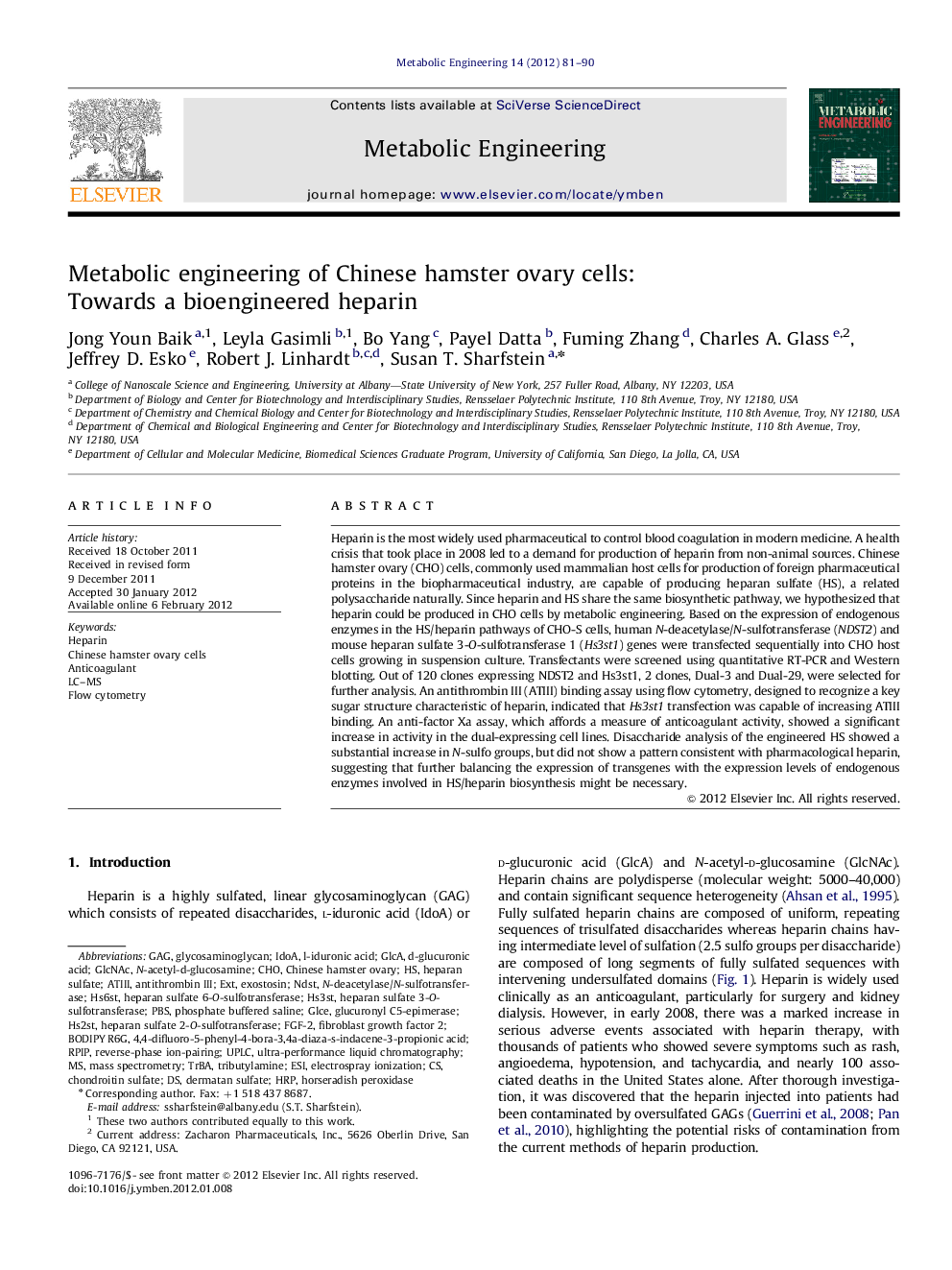| کد مقاله | کد نشریه | سال انتشار | مقاله انگلیسی | نسخه تمام متن |
|---|---|---|---|---|
| 31577 | 44821 | 2012 | 10 صفحه PDF | دانلود رایگان |

Heparin is the most widely used pharmaceutical to control blood coagulation in modern medicine. A health crisis that took place in 2008 led to a demand for production of heparin from non-animal sources. Chinese hamster ovary (CHO) cells, commonly used mammalian host cells for production of foreign pharmaceutical proteins in the biopharmaceutical industry, are capable of producing heparan sulfate (HS), a related polysaccharide naturally. Since heparin and HS share the same biosynthetic pathway, we hypothesized that heparin could be produced in CHO cells by metabolic engineering. Based on the expression of endogenous enzymes in the HS/heparin pathways of CHO-S cells, human N-deacetylase/N-sulfotransferase (NDST2) and mouse heparan sulfate 3-O-sulfotransferase 1 (Hs3st1) genes were transfected sequentially into CHO host cells growing in suspension culture. Transfectants were screened using quantitative RT-PCR and Western blotting. Out of 120 clones expressing NDST2 and Hs3st1, 2 clones, Dual-3 and Dual-29, were selected for further analysis. An antithrombin III (ATIII) binding assay using flow cytometry, designed to recognize a key sugar structure characteristic of heparin, indicated that Hs3st1 transfection was capable of increasing ATIII binding. An anti-factor Xa assay, which affords a measure of anticoagulant activity, showed a significant increase in activity in the dual-expressing cell lines. Disaccharide analysis of the engineered HS showed a substantial increase in N-sulfo groups, but did not show a pattern consistent with pharmacological heparin, suggesting that further balancing the expression of transgenes with the expression levels of endogenous enzymes involved in HS/heparin biosynthesis might be necessary.
.Figure optionsDownload as PowerPoint slideHighlights
► We hypothesized heparan sulfate (HS) pathways could be engineered to produce heparin.
► We developed NDST2 and Hs3st-expressing CHO clones to bioengineer heparin synthesis.
► Bioengineered HS showed increased anticoagulant activity and ATIII binding activity.
► Disaccharide analysis of engineered HS showed an increase in N-sulfo groups.
► Balancing the expression of enzymes involved in HS biosynthesis may be necessary.
Journal: Metabolic Engineering - Volume 14, Issue 2, March 2012, Pages 81–90